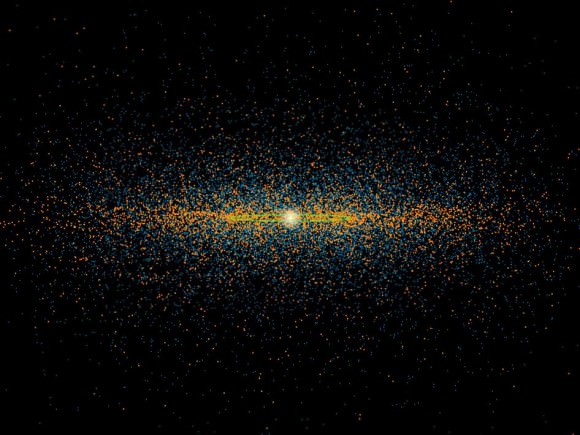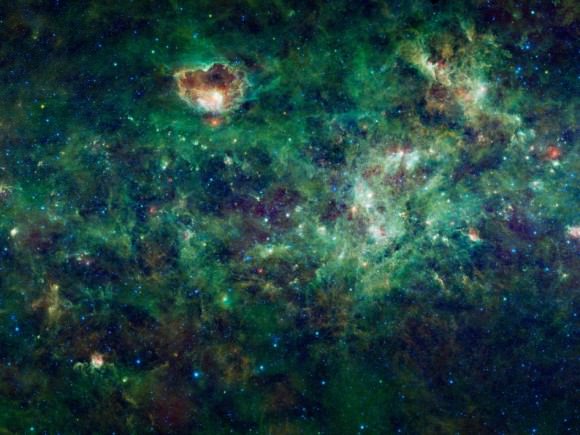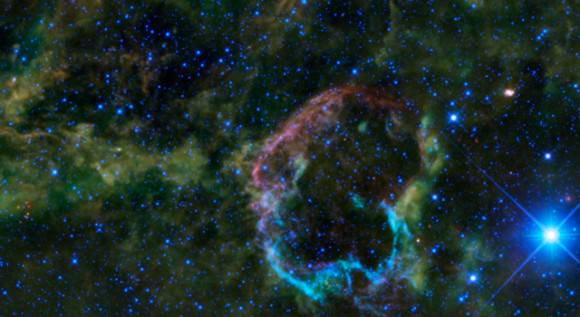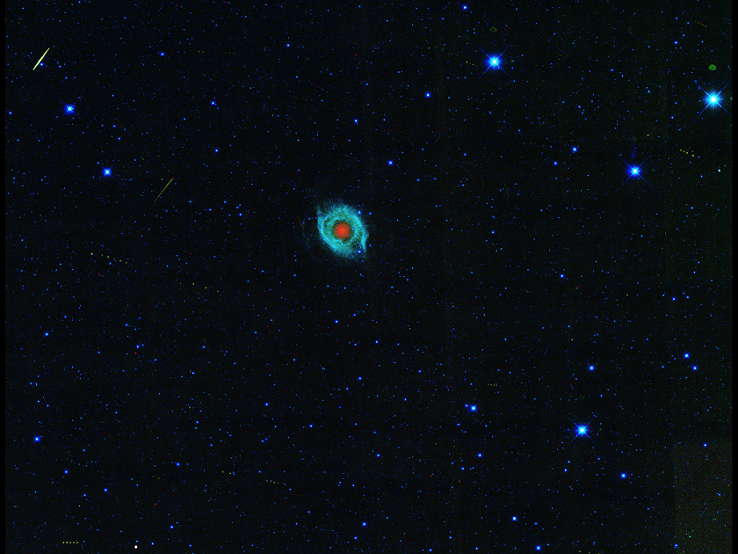Besides being a darn pretty picture of the Helix nebula, this snapshot is a bit of symbolism for NASA. The spacecraft that nabbed this view is called the Wide-field Infrared Survey Explorer, or WISE. If you look very carefully — you may have to click on the picture for a closer view — you can see little dots showing the paths of asteroids in the picture. (The streaks are cosmic rays and satellites.)
WISE has an interesting history. It began as a telescope seeking secrets of the universe in infrared light, but ran out of coolant in 2010 and was repurposed for asteroid searching under the NEOWISE mission. It wrapped up its mission, was put into hibernation in February 2011, then reactivated this August to look for asteroids again for at least the next three years. You can see some pictures and data WISE collected during its mission below the jump.
It’s a nice way, NASA said, to celebrate the fourth anniversary of WISE’s launch. “WISE is the spacecraft that keeps on giving,” said Ned Wright of UCLA, who was the principal investigator of WISE before it transitioned into NEOWISE.





What is the green ring in the top right hand corner of the top image above?
It is a lens (or filter) flare in the telescope; if you look closer at the high resolution image, you will see similar artifacts just above the three other bright stars on the right of the picture.
Thanks
What are the five yellow dots on the bottom left hand corner of top image perfectly aligned in a row? Also lens flares?
Like the image caption states, those yellow dots (and elsewhere in the picture) are due to an asteroid moving while WISE was taking several pictures of the scene – astronomers use these pictures to discover and characterize asteroids.